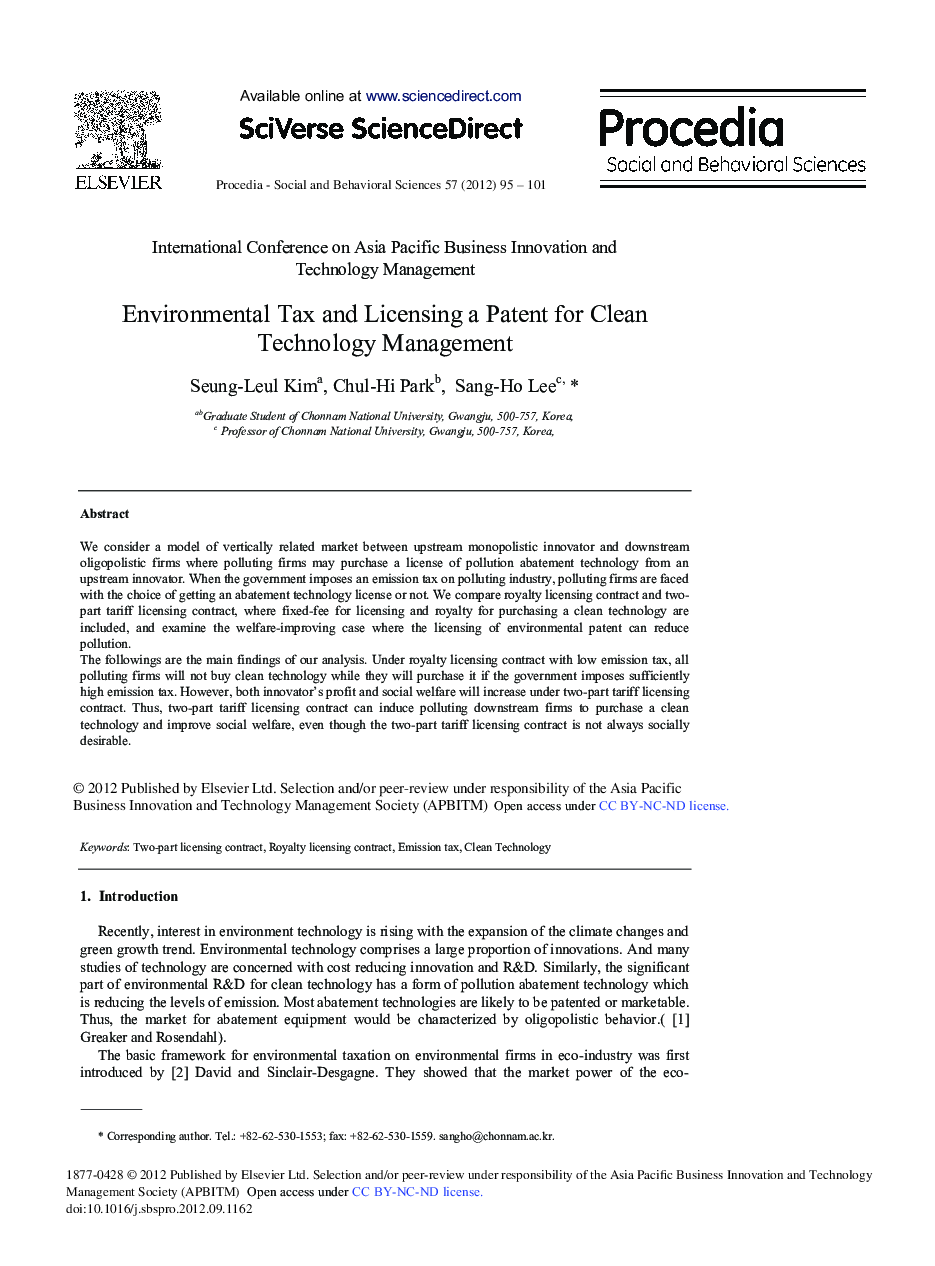| Article ID | Journal | Published Year | Pages | File Type |
|---|---|---|---|---|
| 1120867 | Procedia - Social and Behavioral Sciences | 2012 | 7 Pages |
We consider a model of vertically related market between upstream monopolistic innovator and downstream oligopolistic firms where polluting firms may purchase a license of pollution abatement technology from an upstream innovator. When the government imposes an emission tax on polluting industry, polluting firms are faced with the choice of getting an abatement technology license or not. We compare royalty licensing contract and two-part tariff licensing contract, where fixed-fee for licensing and royalty for purchasing a clean technology are included, and examine the welfare-improving case where the licensing of environmental patent can reduce pollution.The followings are the main findings of our analysis. Under royalty licensing contract with low emission tax, all polluting firms will not buy clean technology while they will purchase it if the government imposes sufficiently high emission tax. However, both innovator's profit and social welfare will increase under two-part tariff licensing contract. Thus, two-part tariff licensing contract can induce polluting downstream firms to purchase a clean technology and improve social welfare, even though the two-part tariff licensing contract is not always socially desirable.
